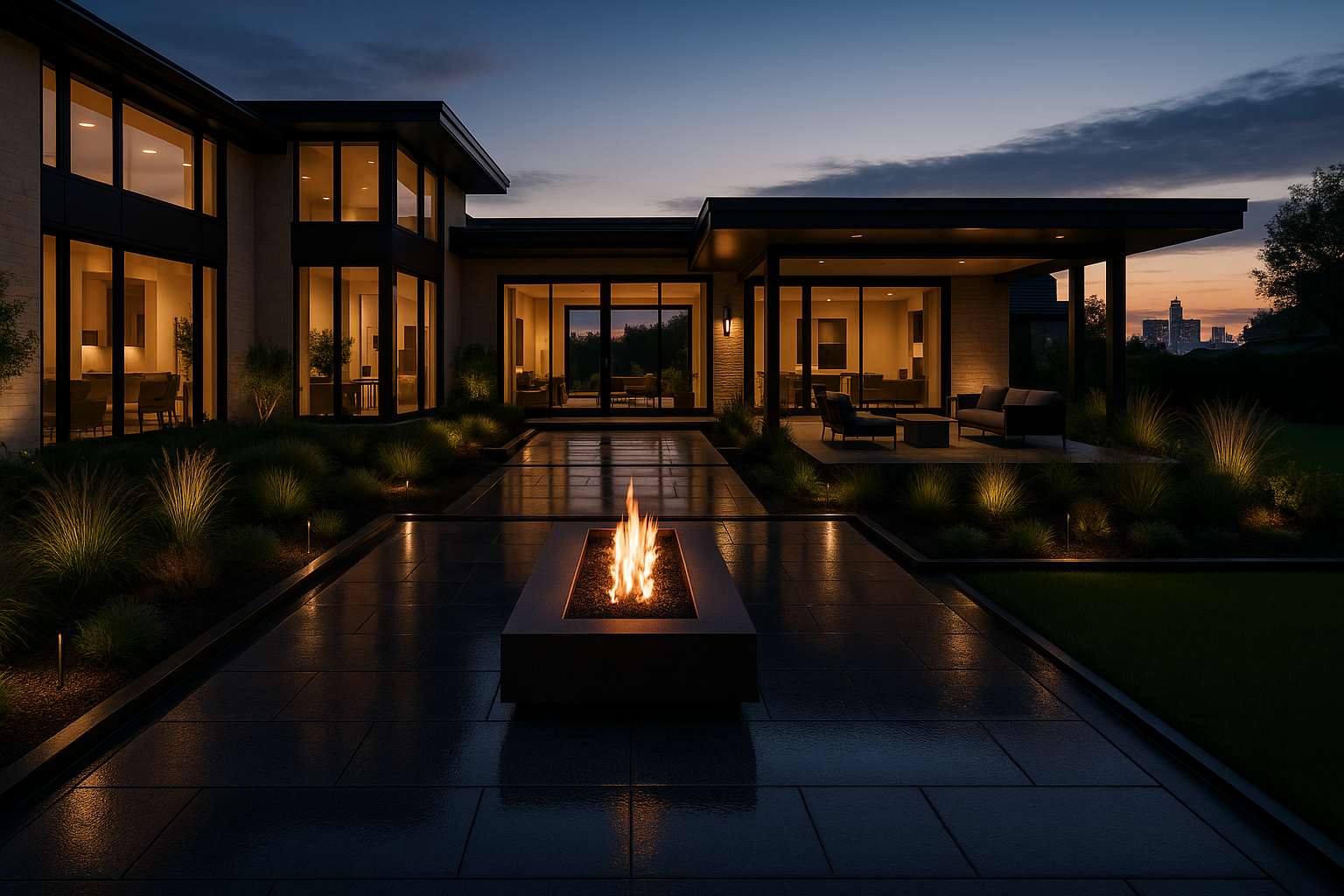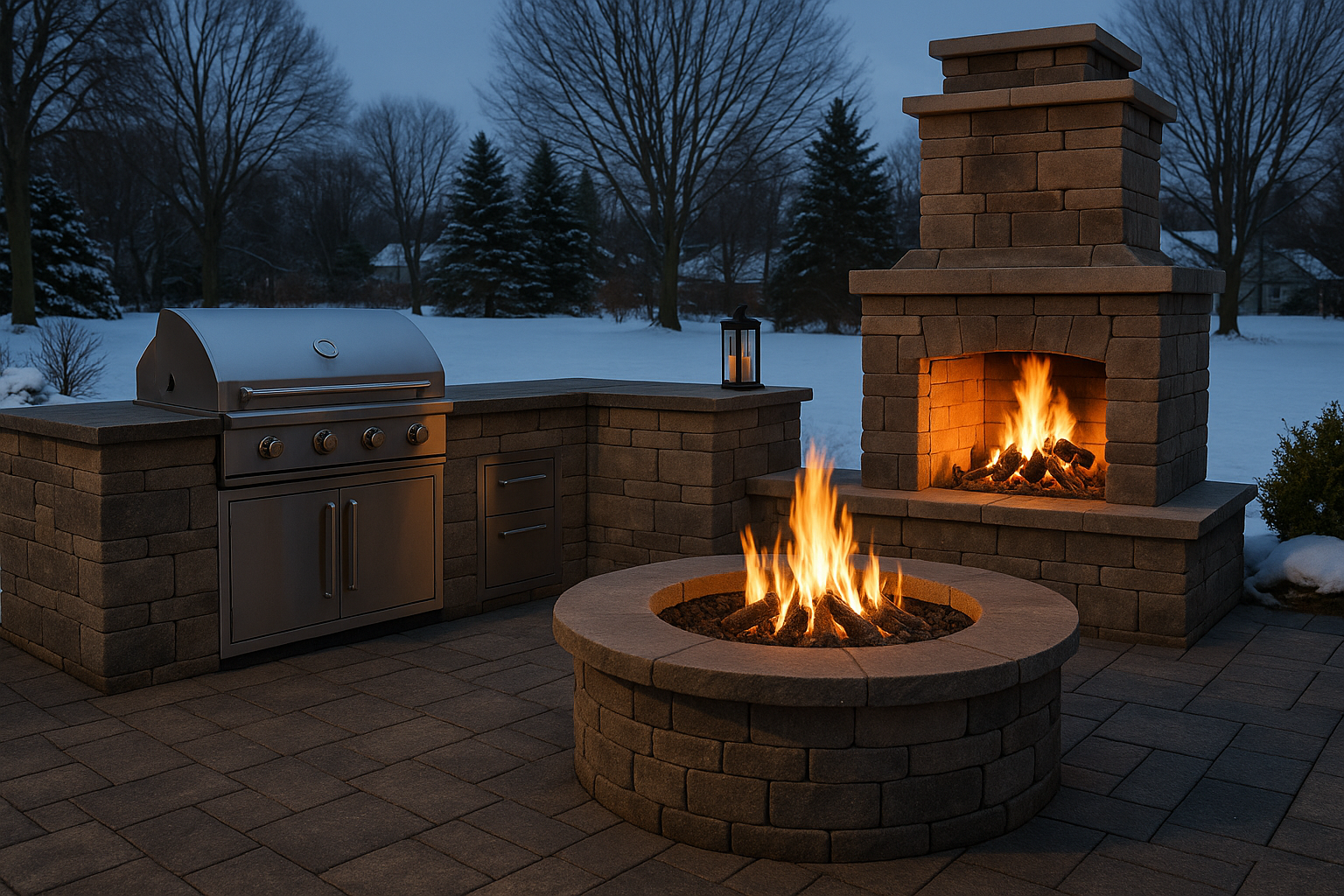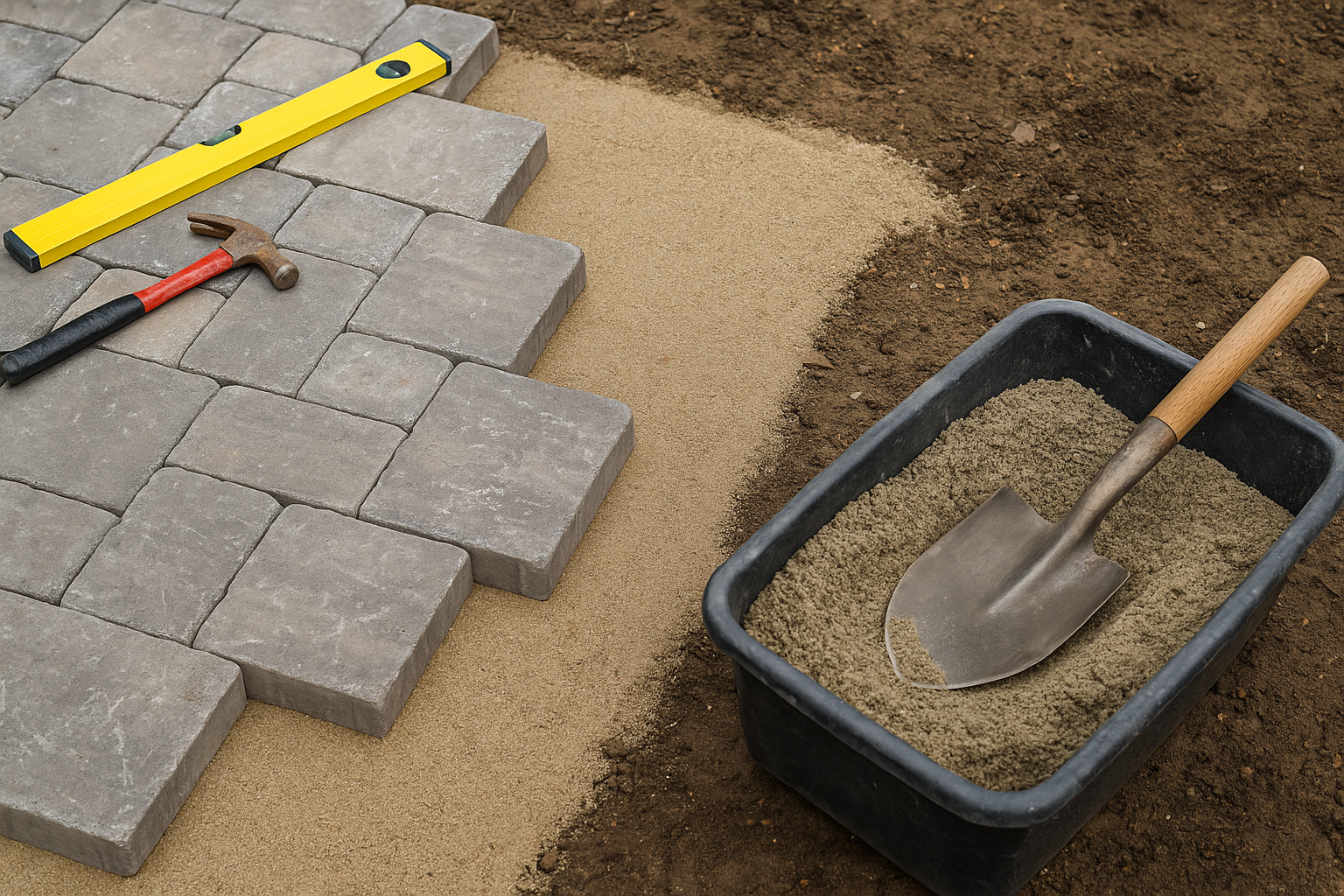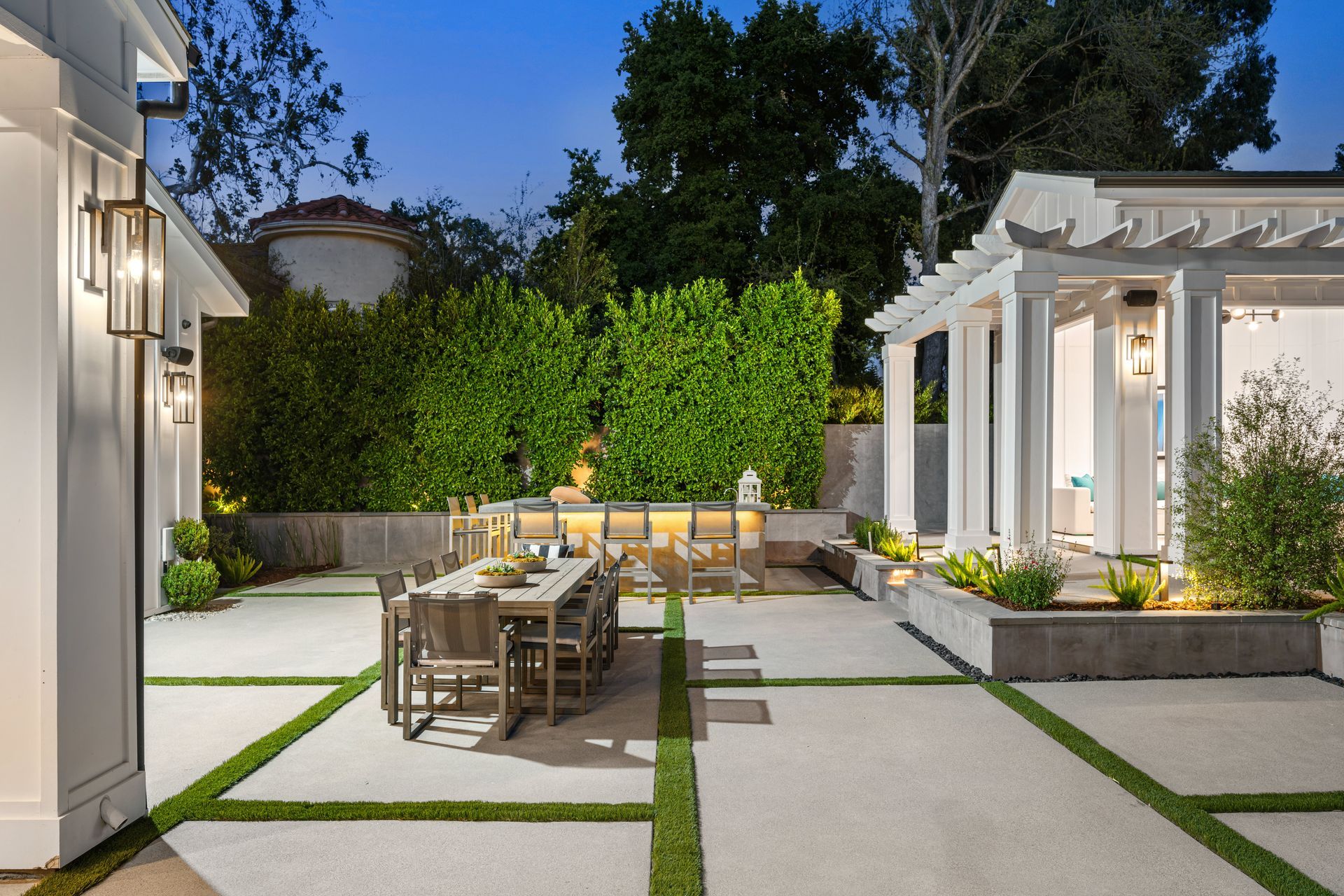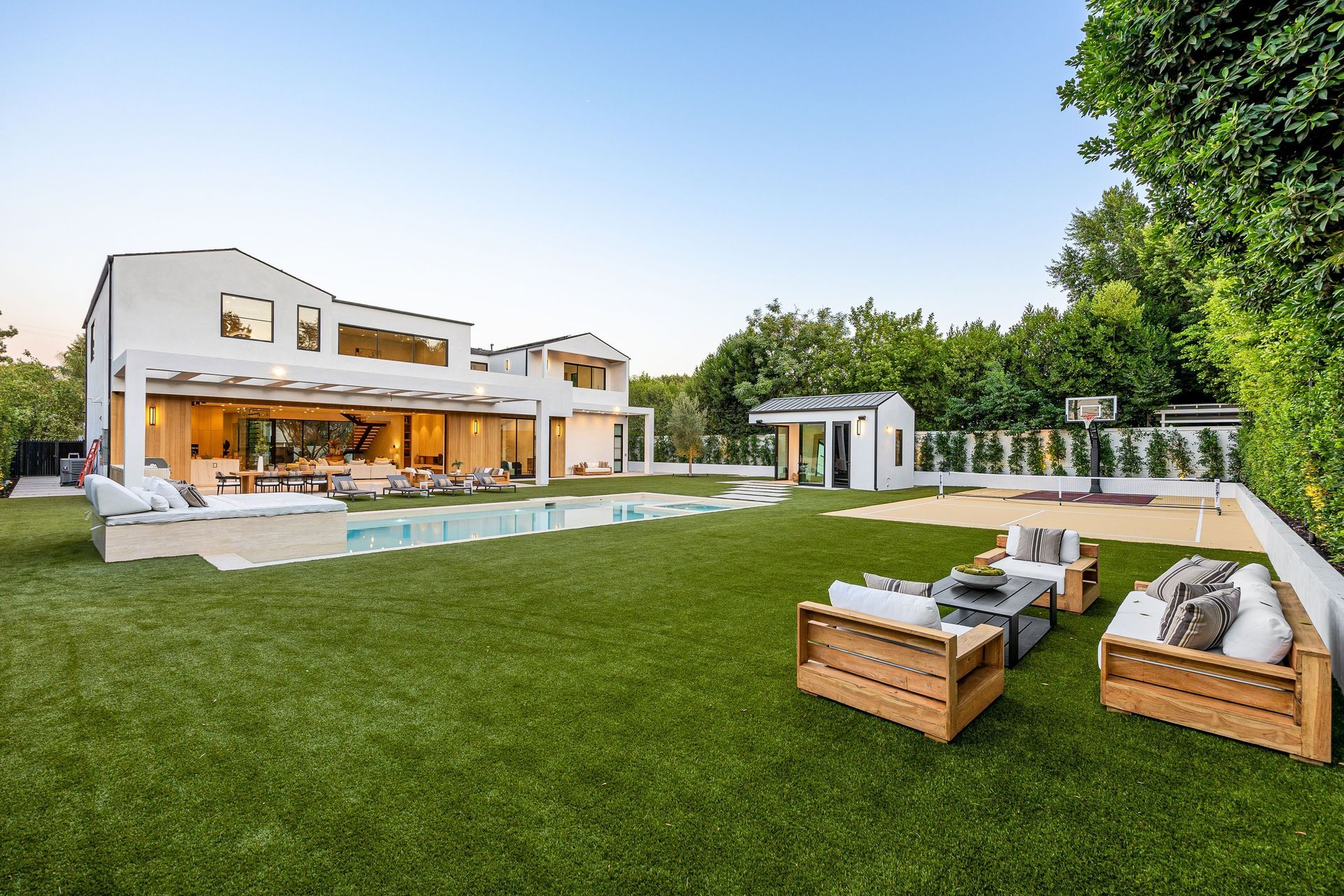Detroit Front-Yard Curb Appeal Blueprint (Historic & Modern)
Your front yard is the handshake your home offers the city—make it count.
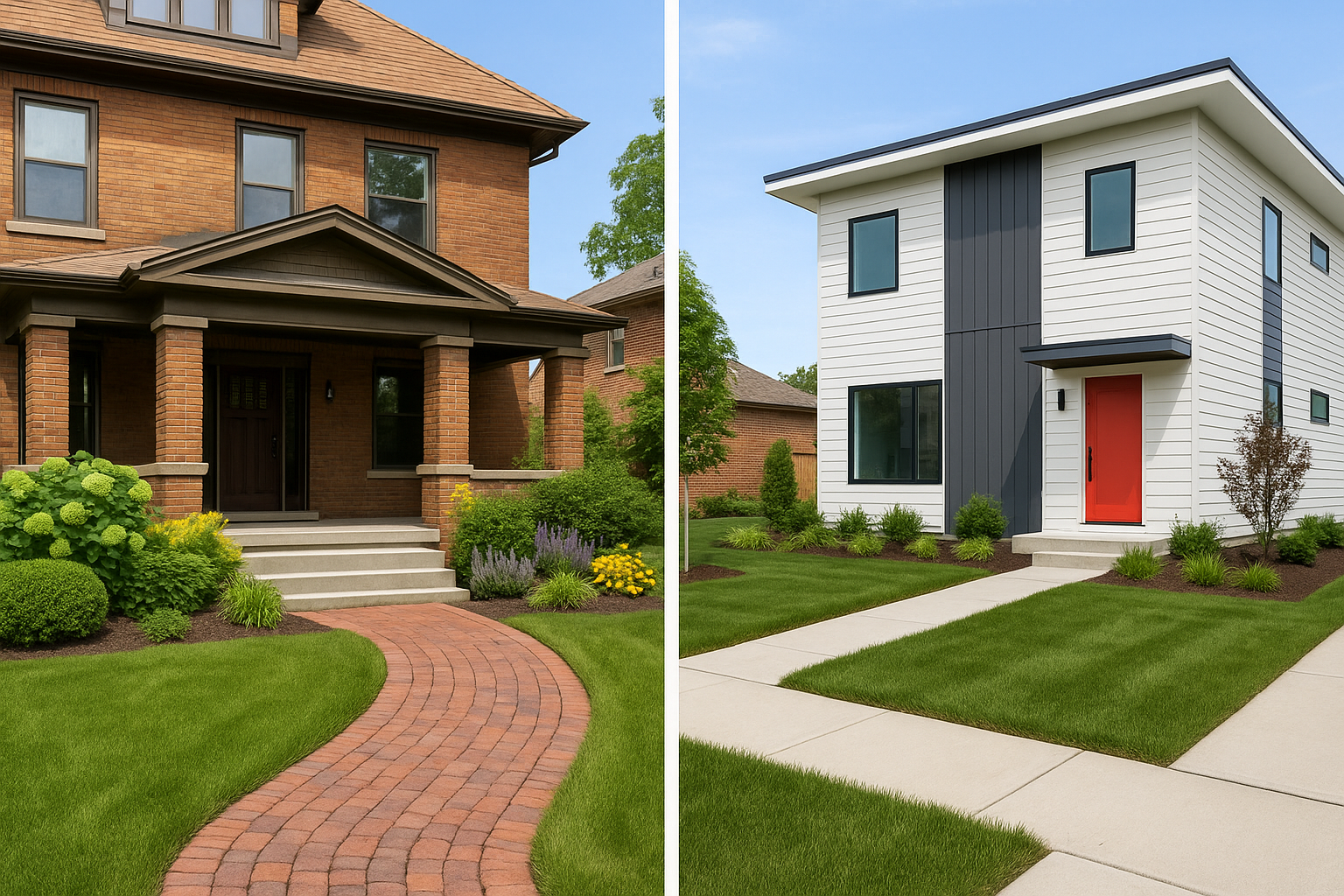
Detroit’s streets tell stories. Brick by brick, porch by porch, that story starts at the sidewalk where guests, neighbors, appraisers, and buyers take their first read on your home. This blueprint lays out a front-yard curb-appeal plan that looks refined in July and still functions in January—whether you live under the stately elms of Indian Village or on a newer block in the northern suburbs. You’ll get a practical, design-forward path that respects Zone 6b winters, clay soils, and narrow urban lots, plus smart details for safety, wayfinding, and year-round beauty. Use it to craft a front approach that fits your architecture and your life, then build it once and enjoy it for years.
The Detroit Reality Check (and Why It Improves Design)
Detroit isn’t a generic “Midwest” climate. We have:
- Freeze–thaw that punishes shortcuts in steps, walkways, and stoops.
- Clay-rich soils that drain slowly and compact easily.
- De-icing salt that splashes onto parkways, curbs, and entry beds.
- Short winter days, meaning your lighting plan must be as thoughtful as your planting plan.
Instead of fighting those facts, this blueprint uses them to guide decisions from the first line on the plan. The result? A front yard that’s elegant, tough, and easy to maintain.
“Great curb appeal is not just pretty—it’s legible, durable, and kind to your maintenance routine.”
Anatomy of High-End Curb Appeal in Zone 6b
Think of the front yard as four linked zones. Each does a job, together they compose a welcome.
- The Parkway + Curb Edge
- The Walk & Stoop
- The Foundation + Façade Beds
- The Threshold: Numbers, Mailbox, and Lighting
Each zone has rules of thumb you can borrow immediately, followed by Detroit-specific tweaks.
1) The Parkway + Curb Edge: Small Strip, Big Impact
Parkways (the strip between sidewalk and curb) are tiny billboards for your taste and upkeep. They also take the worst abuse—salt, snow piles, dog walkers, heat reflected from pavement.
What works here:
- Salt-aware plantings: Think prairie dropseed, switchgrass, serviceberry, and tough ornamental pears where overhead wires permit. Mix in groundcovers like creeping thyme next to pavers for fragrance and quick recovery from foot traffic.
- Modular hardscape bands: A single paver row parallel to the sidewalk cleans the edge, resists heave, and creates a visual baseline.
- Durable tree guards (historic districts): If allowed, simple steel rings protect young trunks from bikes and snow, and they look purposeful rather than fussy.
Avoid: High-maintenance lawns; they scorch by March and invite ruts. In narrow strips, go plant-forward or plant + hardscape.
2) The Walk & Stoop: Geometry That Reads as Architecture
The best front walks feel inevitable, like they always belonged. That’s geometry. Align the path with something meaningful: the front door, a key window, a porch column. Avoid pinball-style jogs unless your lot demands them.
Pro geometry cues:
- Anchor with a landing. A 5'–6' wide landing at the base of the steps lets two people pass and gives delivery folks a place to set packages.
- Keep turns gentle. If you must bend the path around a tree or garden, make curves broad and purposeful.
- Honor the façade. On brick and stone homes, choose paving modules that echo sill heights or lintel rhythms.
Winter reality: Slope the walk 1–2% away from the house and toward a safe outlet. A walkway that drains well is safer under snow and freeze–thaw, and it stays cleaner in spring.
3) Foundation + Façade Beds: Bones First, Then Color
In January, flowers don’t save a front yard—structure does. Begin with evergreen bones (dwarf conifers, upright junipers, boxwood in protected exposures), then add multi-season shrubs (hydrangea, ninebark, viburnum), and finally perennials for color and movement.
Detroit-smart planting moves:
- Plant in groups. Repetition calms small spaces and makes maintenance faster.
- Use living mulch. Groundcovers between shrubs suppress weeds better than fabric and keep soil alive.
- Salt-aware edges. Along drives and sidewalks, keep delicate species back a step and switch to tougher plants at the margin.
Mulch rule: 2–3" of shredded hardwood; never up against trunks or crowns. Refresh lightly each spring (½–1")—not a heavy dump every few years.
4) The Threshold: Numbers, Mailbox, Lights
Legibility is luxury. House numbers you can read from the street, a mailbox that coordinates with fixtures and hardware, and lighting that reveals—not blasts—architecture.
- Numbers: Contrast is key. Matte black on light façades, brushed metal on dark brick. Aim for 4"–6" tall and place near the primary entrance.
- Mailbox: Wall-mounts can be jewelry; post-mounts earn their keep when combined with plant pockets or a brick base that echoes the home.
- Lighting: Warm (2700–3000K), shielded, and layered—step lights for safety, a soft sconce for welcome, and one tree accent for depth. Avoid glare into neighbors’ windows.
Narrow Lot? Use Constraint as a Design Tool
Many Detroit blocks, especially historic ones, have compact front yards. That’s good news: smaller spaces mean every move counts, and the cost to do it right is lower.
Narrow-lot tactics that feel generous:
- One strong axis. Keep the walk straight or gracefully arced to the door. Meandering paths shrink small yards.
- Scale plants to architecture. Columnar forms (hornbeam, beech, upright yews) frame without consuming width.
- Borrow views. Use low fencing, hedges, or layered planting to “borrow” green from neighbors while adding privacy.
- Stoop strategy. Widen risers and add a landing so the approach feels ceremonial, not cramped.
Clay Soil: Build for Drainage, Not Drama
You can’t change what’s underground, but you can work with it.
Front-yard clay playbook:
- Surface grading first. Establish a subtle pitch away from the house and toward turf or rain gardens.
- Subsurface relief where needed. In persistent wet pockets, install perforated pipe and gravel to a legal outlet.
- Compost in planting zones. Blend compost into the top 6–8" as you plant (don’t till when wet). Top-dress annually.
- Choose flexible systems. Interlocking pavers over engineered base tolerate seasonal movement better than monolithic slabs.
Safety in Winter: Details That Pay Off Every Day
- Non-slip textures on treads and landings.
- Low, shielded step lights that don’t blind you when snow reflects.
- Snow storage plan so piles don’t crush plantings or block sightlines.
- Salt-smart zones with tolerant species along sidewalks and drives.
These aren’t extras—they’re the reason your front yard still looks composed in February.
The Permit Picture (Especially in Historic Districts)
If you live in a designated historic district, many exterior changes—paving, walls, fences, even some plantings—may require review. Across the city and suburbs, a few rules of thumb apply:
- Retaining walls over certain heights trigger permits.
- New stoops or structural changes often require drawings and inspections.
- Right-of-way work (curbs, sidewalks, parkways) may need municipal approval.
Loop in a pro early, provide clear drawings and product cut sheets, and your schedule stays clean.
The Weekend Wins vs. Pro Moves Checklist
Weekend Wins (High Impact, Low Risk)
- Edge beds cleanly (steel or paver) and refresh mulch.
- Replace house numbers and mailbox; coordinate finishes.
- Plant 3–5 shrubs in repeated groups; add a groundcover layer.
- Add four warm, low-glare path/step lights with a small transformer.
- Create a simple paver band along the sidewalk to tidy the edge.
Pro Moves (Worth Doing Once, Doing Right)
- Regrade + drainage to a legal outlet.
- Full stoop rebuild or new front steps with code-true risers and treads.
- Interlocking paver walk with engineered base and edge restraint.
- New parkway tree with root flare set correctly and watering plan.
- Master planting plan tied to architectural color and texture.
Three Fast “Mock-Ups” You Can Steal
Below are quick recipes—dimensions you can flex, plants you can swap, but proportions that work.
A) Brick Façade Classic
Vibe: Timeless, tidy, and substantial.
- Walk: 4'–5' wide clay-friendly pavers in a running bond; soldier-course border to frame.
- Landing: 6' deep by door, sized for a pair of planters and parcels.
- Steps: Treads with slight overhang; textured for winter grip.
- Foundation: Repeated groupings of boxwood or dwarf yews; hydrangeas between; a line of hosta in high shade.
- Parkway: Serviceberry + prairie dropseed understory.
- Lighting: Step lights + a single tree accent washing up the serviceberry.
- Color cue: Match paver border to the brick’s mortar tone for cohesion.
B) Stone Façade, Soft Contemporary
Vibe: Layered greens with silvers and blues; naturalistic but edited.
- Walk: Large-format pavers with 2" joints infilled with fine gravel; feather edges into plantings.
- Foundation: Columnar hornbeams flanking the door; switchgrass and salvia for texture and pollinators.
- Accent: Sculptural urn in charcoal on the landing.
- Parkway: Low, salt-aware matrix (thyme, sedum, allium).
- Lighting: Discreet path lights with shielded heads; subtle wash on stone.
C) Modern Lines, Narrow Lot
Vibe: Clean, graphic, and calm.
- Walk: 4' straight axis in large rectangles; minimal joints.
- Landing: Flush with walk; one step at threshold if grades demand.
- Planting: Repeating vertical elements—upright junipers or yews—with clipped groundcover.
- Parkway: Paver band + grid of small perennials (carex, ajuga) for a patterned look.
- Lighting: Recessed step lights + indirect house number light.
The Numbers That Help You Budget (And Avoid Regret)
- Walkway rebuild (interlocking pavers, 4' x 30'): Varies by site; expect investment for proper base, edge restraint, and cuts.
- Stoop rebuild: Highly variable—structural work, finishes, railings.
- Parkway replanting: Affordable and high-impact; trees add to cost but repay in shade and scale.
- Lighting package (transformer + 4–8 fixtures): Pricing ranges; plan for professional wiring where code requires.
Phasing is your friend. Start with drainage and the walk/stoop; plant bones next season; layer lighting and detail last.
The “Curb Appeal Logic” Test (Run This Before You Spend)
Ask yourself:
- From 60 feet: Can I see the front door, numbers, and a clear path?
- From 20 feet: Do textures change at the right moments (steps, landing, threshold)?
- At the threshold: Can two people pass comfortably? Is there a place to set packages?
- In January at 6pm: Are steps and edges legible without glare?
If you can answer yes to all four, your plan is on track.
Maintenance That Looks Invisible (The Good Kind)
- Spring: Cut back perennials, top-dress beds with compost, fluff mulch (add thinly if needed).
- Summer: Quick weeding passes after big rains; prune lightly for shape.
- Fall: Plant trees/shrubs; divide perennials; set winter scenes with lighting.
- Winter: Mark plow zones; clear steps; protect evergreens in exposed sites if needed.
Focus on small, regular touches rather than big reactive weekends.
When to Call a Pro (and What to Ask)
Front yards are small, but they touch safety, code, and property value. If any of the following are true, bring in help:
- Grades send water toward the foundation.
- You need new steps, walls, or railings.
- You’re in a historic district or uncertain about right-of-way rules.
- You want a cohesive design that matches your home’s era.
When you interview detroit landscaping companies, ask for:
- A drawing that shows grades, slopes, and materials.
- Section details for the walk (base depth, edge restraint).
- Plant lists with sizes and placement.
- A lighting layout with fixture types and color temperature.
The right partner will welcome those questions.
Detroit-Specific Planting Shortlist (Fast, Reliable, Refined)
- Structure: Dwarf conifers, upright yews, columnar hornbeam, juniper ‘Skyrocket’ (wind-tolerant).
- Shrubs: Hydrangea paniculata, ninebark, winterberry, boxwood in protected exposures.
- Perennials: Catmint, salvia, hardy geranium, hellebore (winter interest), ornamental grasses for movement.
- Groundcovers: Pachysandra in shade, creeping thyme in sun, ajuga for shoulder seasons.
Mix textures the way you’d mix fabrics in a great room—coarse with fine, matte with glossy, upright with billowy.
Frequently Asked Detroit Questions
How wide should my front walk be?
Four feet is a comfortable minimum; five feels generous. If you carry strollers or groceries often, go wider near the door.
What slope should I aim for?
Typically 1–2% away from the house toward a drain, turf, or parkway.
Is stamped concrete cheaper than pavers?
Upfront costs can be similar, but pavers excel in freeze–thaw because they can flex and are easier to service if something settles.
Do I need irrigation in the front yard?
Not always. Smart plant selection, soil improvement, and mulch often cut watering needs dramatically. Drip in foundation beds is a tidy upgrade if you travel.
From Browsing to Building: How a Professional Engagement Works
A strong detroit landscape company will offer a concise path:
- Consultation on site: Walk the approach, note grades, sun, salt exposure, and architectural cues.
- Concept plan: Show the walk alignment, landing size, planting bones, and lighting locations.
- Budget & phasing: Prioritize walk/stoop + drainage, then plant bones, then detail and lighting.
- Build sequence: Protect existing elements, install base and drainage, set pavers/steps, plant, light, clean.
- Aftercare: First-year check for joints, edges, and plant health.
That’s the backbone of quality landscape company services. You deserve clarity before shovels hit the ground.
Why Choose a Local Partner (and Not a One-Size-Fits-All Template)
A seasoned michigan landscape company understands our soils, weather, and municipal quirks. You won’t be a test case. You’ll get a plan that respects the block’s character and your home’s era, whether you lean traditional or modern. And because front yards are public, a polished plan reflects on the whole street—neighbors notice, value rises.
When you’re comparing detroit landscaping companies, review winter photos, not just June glamour shots. Ask how they manage salt zones, snow storage, and lighting glare on short winter days. On the plant side, request substitutions if a cultivar fails repeatedly in your microclimate; experience shows up in those recommendations.
Bringing It All Together: A Sample One-Page Scope
- Walk: 4'-6" wide interlocking paver walk, 30' long; engineered base, geotextile over clay, concrete soldier course.
- Landing & Stoop: 6' x 8' landing; two wide risers with textured treads; low rail as required by code.
- Parkway: Serviceberry understory with prairie dropseed + thyme at hardscape edge.
- Foundation Beds: Upright yews framing the door; hydrangea paniculata rhythm; hardy geranium + lamium in shade.
- Lighting: Four warm step lights, two path fixtures, one serviceberry accent.
- Numbers/Mailbox: 6" brushed metal numerals; charcoal wall-mount mailbox.
- Maintenance Plan: Spring compost top-dress, thin mulch refresh, fall pruning and plant additions.
That single page, built well, can change how your home greets the world.
Ready to Start? Do These Three Things This Weekend
- Stand across the street and take photos. Your eye will see alignment errors and clutter you miss up close.
- Sketch the walk on graph paper. Mark door, windows, steps, and potential landing. Try one straight axis and one gentle curve.
- Edit one zone. Edge a bed, refresh mulch, or replace your numbers. Small wins create momentum.
Why This Blueprint Converts Browsers into Builders
Because it’s not a generic Pinterest board. It’s local, seasonal, and practical. It respects the way Detroit homes are built and the way Detroit winters behave. It foregrounds safety and maintenance while delivering beauty. And it gives you clear cues for what you can do this weekend versus what’s smart to hire out.
When you’re ready for a cohesive plan with real specifications, Rohto is the detroit landscape company that mixes design sensibility with field-tested execution. We build front approaches that feel like part of the architecture, not a bolt-on afterthought—true luxury landscaping that reads quiet, confident, and cared-for.
Closing Section: Make Your Front Yard the City’s Favorite Hello
A great Detroit front yard doesn’t shout; it speaks clearly. A confident walk aligned to the door. Steps that feel easy underfoot in January. Planting that holds shape in winter and glows in July. Numbers you can read from the street and light that guides without glare. Do those things once, do them well, and every return home feels like an arrival.
Your Next Move, Made Simple
If you want an expert to turn this blueprint into a buildable plan and a flawless landscape installation, talk to the local team that treats your front approach like architecture. Rohto delivers complete residential landscaping solutions—from concept to planting to lighting—that respect your block’s character and elevate your home’s value.

